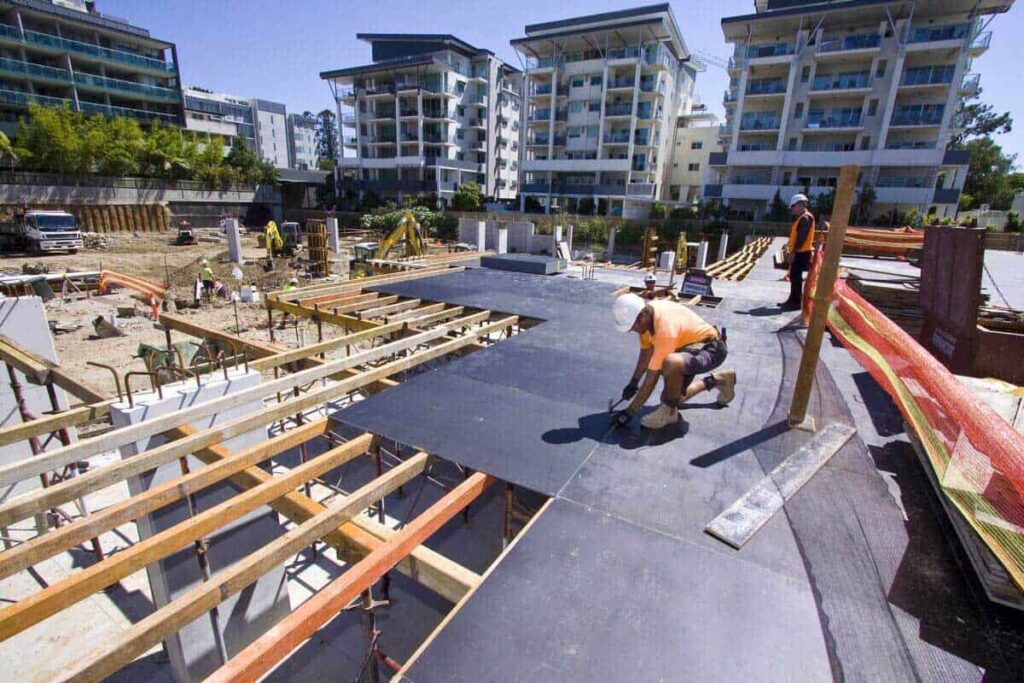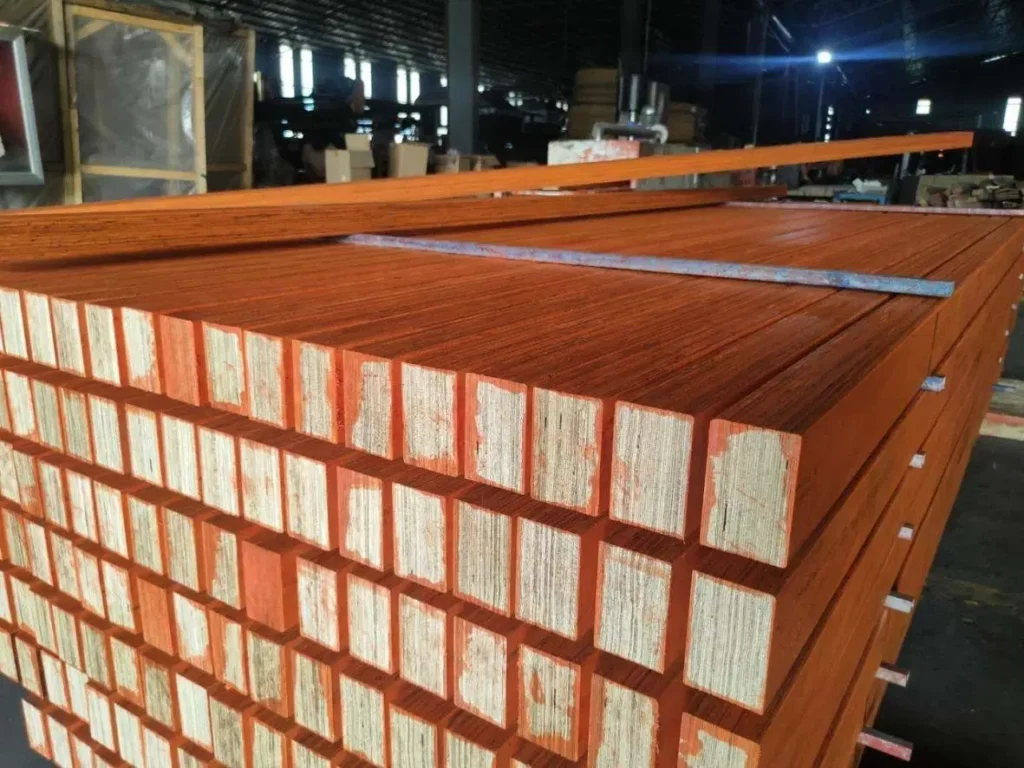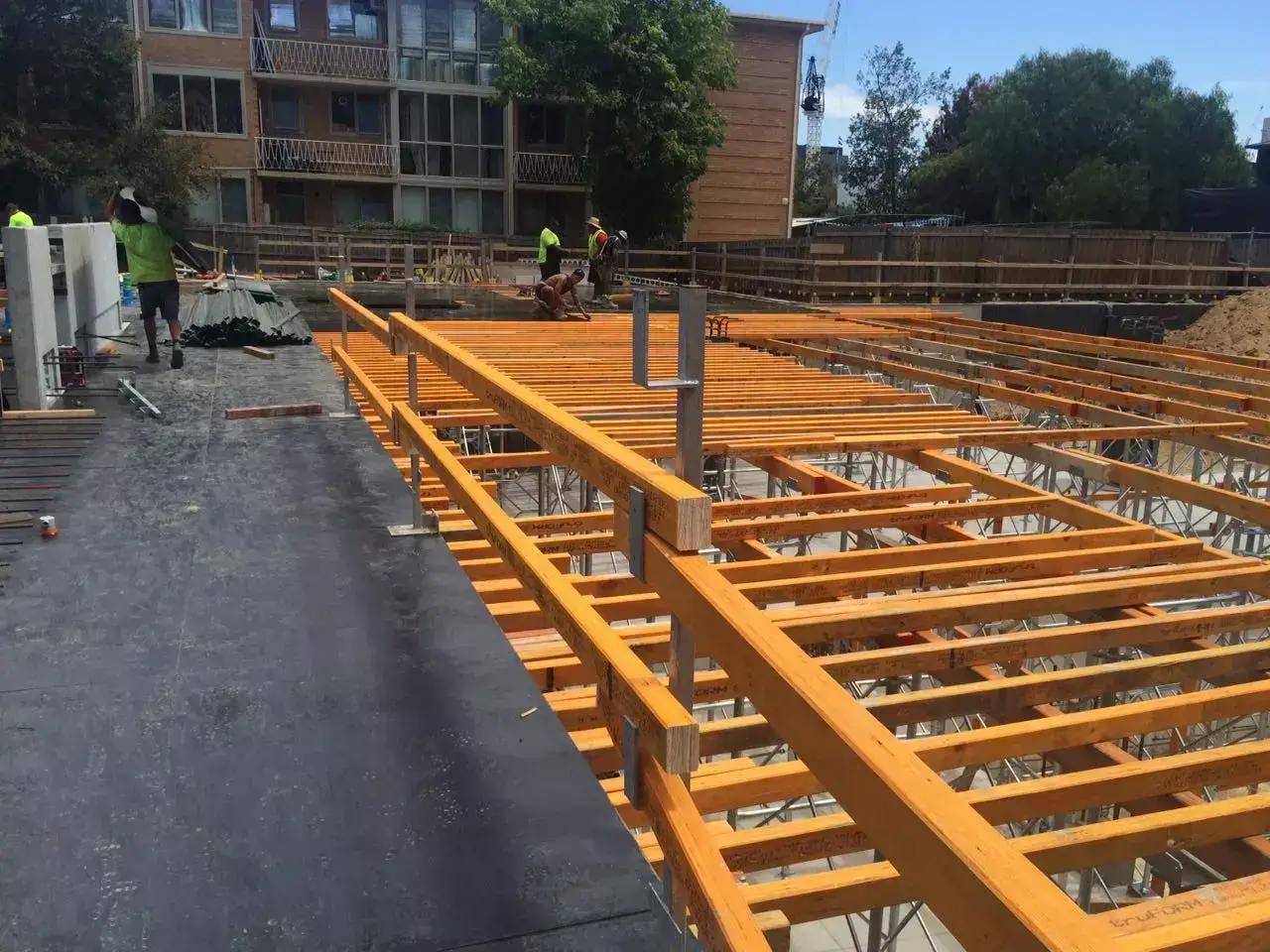Formwork is an integral part of any construction project, and using the right materials can greatly enhance efficiency. One such material that has gained popularity is F17 grade plywood. In this article, we will delve into the various aspects of F17 grade plywood and explore how it can help maximize efficiency in formwork.
Understanding F17 Grade Plywood
F17 grade plywood is a high-quality structural plywood that is specifically designed for use in formwork applications. It is made from multiple layers of veneer that are bonded together with a strong adhesive. The F17 grading indicates that the plywood is suitable for structural purposes, including formwork.
When it comes to construction projects, the quality of materials used can significantly impact the overall outcome. F17 grade plywood stands out as a reliable choice due to its exceptional strength and durability. This type of plywood undergoes rigorous testing to ensure it meets the required standards for structural integrity, providing peace of mind to builders and contractors.
Characteristics of F17 Grade Plywood
F17 grade plywood possesses several key characteristics that make it an excellent choice for formwork. Firstly, it is extremely strong and durable, capable of withstanding heavy loads and rough handling. Additionally, it has a smooth and consistent surface, ensuring accurate formwork finishes. Furthermore, F17 grade plywood is resistant to moisture and shrinking, making it ideal for both indoor and outdoor projects.
Moreover, the manufacturing process of F17 grade plywood involves precision and attention to detail. Each layer of veneer is carefully selected and treated to enhance its strength and performance. This meticulous approach results in a product that not only meets industry standards but also exceeds expectations in terms of reliability and longevity.

Benefits of Using F17 Grade Plywood
The use of F17 grade plywood in formwork offers several advantages. One of the major benefits is its cost-effectiveness. Unlike other alternatives, F17 grade plywood provides a durable and reliable solution at a reasonable price point. Moreover, its versatility allows for easy customization to meet specific project requirements. Lastly, F17 grade plywood is readily available, making it easily accessible to contractors and builders.
For construction projects that require precision and structural integrity, F17 grade plywood proves to be a valuable asset. Its ability to withstand varying weather conditions and heavy loads makes it a versatile choice for a wide range of applications. Whether used in concrete formwork or structural framing, F17 grade plywood delivers consistent performance and durability, ensuring the success of construction projects both big and small.
The Role of Plywood in Formwork
Plywood plays a crucial role in formwork, acting as a temporary mold that holds concrete in place until it sets and hardens. It provides structural support and ensures that the concrete maintains its designated shape and form. With proper use of plywood in formwork, contractors can achieve accurate and consistent results, thereby streamlining the construction process.
Moreover, plywood used in formwork serves as a smooth and even surface for the concrete to be poured onto, resulting in a polished finish once the formwork is removed. This finish is not only aesthetically pleasing but also contributes to the overall strength and durability of the concrete structure.
To read more click here.
Importance of Plywood in Formwork
Plywood is essential in formwork due to its strength, durability, and dimensional stability. It can withstand the pressure exerted by freshly poured concrete, preventing any deformities or collapses. Additionally, plywood can be easily cut and shaped to fit different formwork configurations, allowing for flexibility in design and construction.
Furthermore, plywood’s smooth surface helps in releasing the formwork easily once the concrete has set, reducing the time and effort required for demolding. This efficiency is crucial in construction projects where speed and precision are key factors in meeting deadlines and ensuring quality.
Selecting the Right Plywood for Formwork
Choosing the appropriate plywood for formwork is crucial to ensure the successful execution of a construction project. Factors to consider include the grade of plywood, its thickness, and the type of glue used for bonding the layers. F17 grade plywood is often the preferred choice for formwork due to its outstanding strength and durability. Read more about durability on https://www.engr.psu.edu/ce/courses/ce584/concrete/library/materials/aggregate/durability.htm
Additionally, the moisture resistance of the plywood is a critical factor to consider, especially in construction projects where the formwork may be exposed to the elements. Using moisture-resistant plywood helps maintain the integrity of the formwork and prevents warping or delamination, ensuring the stability of the concrete structure being formed.
Enhancing Efficiency with F17 Grade Plywood
F17 grade plywood can greatly contribute to improving efficiency in formwork. Let’s explore two key aspects – its cost-effectiveness, longevity, and environmental sustainability.
Cost-Effectiveness of F17 Grade Plywood
When it comes to construction, budget considerations are always a top priority. F17 grade plywood offers an excellent solution by providing a balance between affordability and performance. Its high-quality construction ensures that it can withstand multiple uses, thus reducing the need for frequent replacements. Additionally, the cost-effectiveness of F17 grade plywood extends beyond its initial purchase price. Its durability and long lifespan mean that it requires less maintenance over time, saving both time and money for construction projects.
Durability and Longevity of F17 Grade Plywood
F17 grade plywood is known for its exceptional durability. Its robust structure can withstand the elements, prolonged exposure to moisture, and heavy loads without compromising its integrity. This longevity translates to reduced downtime and increased productivity on construction sites. Moreover, the longevity of F17 grade plywood contributes to environmental sustainability by reducing the amount of material waste generated from frequent replacements of lower-grade plywood. By choosing F17 grade plywood, construction companies can align with eco-friendly practices while also benefiting from its long-lasting performance.
Best Practices for Using F17 Grade Plywood in Formwork
While F17 grade plywood is a reliable material for formwork, proper handling and maintenance are essential to maximize its efficiency. Let’s explore some best practices.
Formwork is a crucial component in construction projects, providing the necessary support for concrete as it sets and hardens. F17 grade plywood, known for its strength and durability, is a popular choice for formwork due to its ability to withstand heavy loads and repetitive use over time.
Proper Handling and Storage
When handling F17 grade plywood, it is crucial to avoid dropping or mishandling it, as this can cause damage to the edges and surface. Proper storage is also important to prevent exposure to moisture or excessive heat, both of which can negatively impact the plywood’s performance.
It is recommended to store F17 grade plywood in a dry, well-ventilated area, elevated off the ground to prevent direct contact with moisture. Storing the plywood flat and supported along its entire length can help maintain its structural integrity and prevent warping or bending.
Maintenance Tips for F17 Grade Plywood
To ensure the longevity of F17 grade plywood, regular inspections and maintenance are vital. Any signs of damage, such as cracks or delamination, should be addressed immediately to prevent further deterioration. Additionally, applying appropriate coatings or sealants can enhance the plywood’s resistance to moisture and wear.
Inspecting the plywood for protruding nails or screws before each use can prevent damage to the formwork and ensure a smooth surface finish on the concrete. Cleaning the plywood after each use and applying release agents can also help prolong its lifespan and maintain optimal performance. Click here to read more about lifespan.
Future Trends in Plywood Formwork
The construction industry is constantly evolving, and new advancements in plywood formwork are being developed to further improve efficiency and sustainability.
Technological Advancements in Plywood Formwork
With the rapid advancements in technology, innovative solutions are emerging in the field of plywood formwork. These include the development of lightweight plywood materials and the integration of digital design tools, enabling more efficient and precise formwork construction.
One notable technological advancement in plywood formwork is the use of automated robotic systems for cutting and shaping plywood sheets. These systems can significantly reduce manual labor, increase precision, and speed up the formwork assembly process. By incorporating robotics into plywood formwork production, construction companies can achieve higher productivity and consistency in their projects.

Sustainability and Plywood Formwork
As sustainability becomes increasingly important in construction, the use of environmentally friendly materials in formwork is gaining momentum. Plywood offers a renewable and recyclable option while maintaining its structural integrity and performance. Additionally, the responsible sourcing and proper disposal of plywood contribute to a greener construction industry.
Another aspect of sustainability in plywood formwork is the development of bio-based adhesives and coatings for plywood sheets. These eco-friendly alternatives reduce the environmental impact of plywood production and improve indoor air quality in construction projects. By incorporating bio-based materials into plywood formwork, builders can create healthier and more sustainable buildings for future generations.
In conclusion, maximizing efficiency in formwork can be achieved by utilizing F17 grade plywood. Its outstanding characteristics, cost-effectiveness, and durability make it an ideal choice for various construction projects. By following best practices and staying abreast of future trends in plywood formwork, contractors can continue to enhance efficiency and sustainability in their construction processes.

